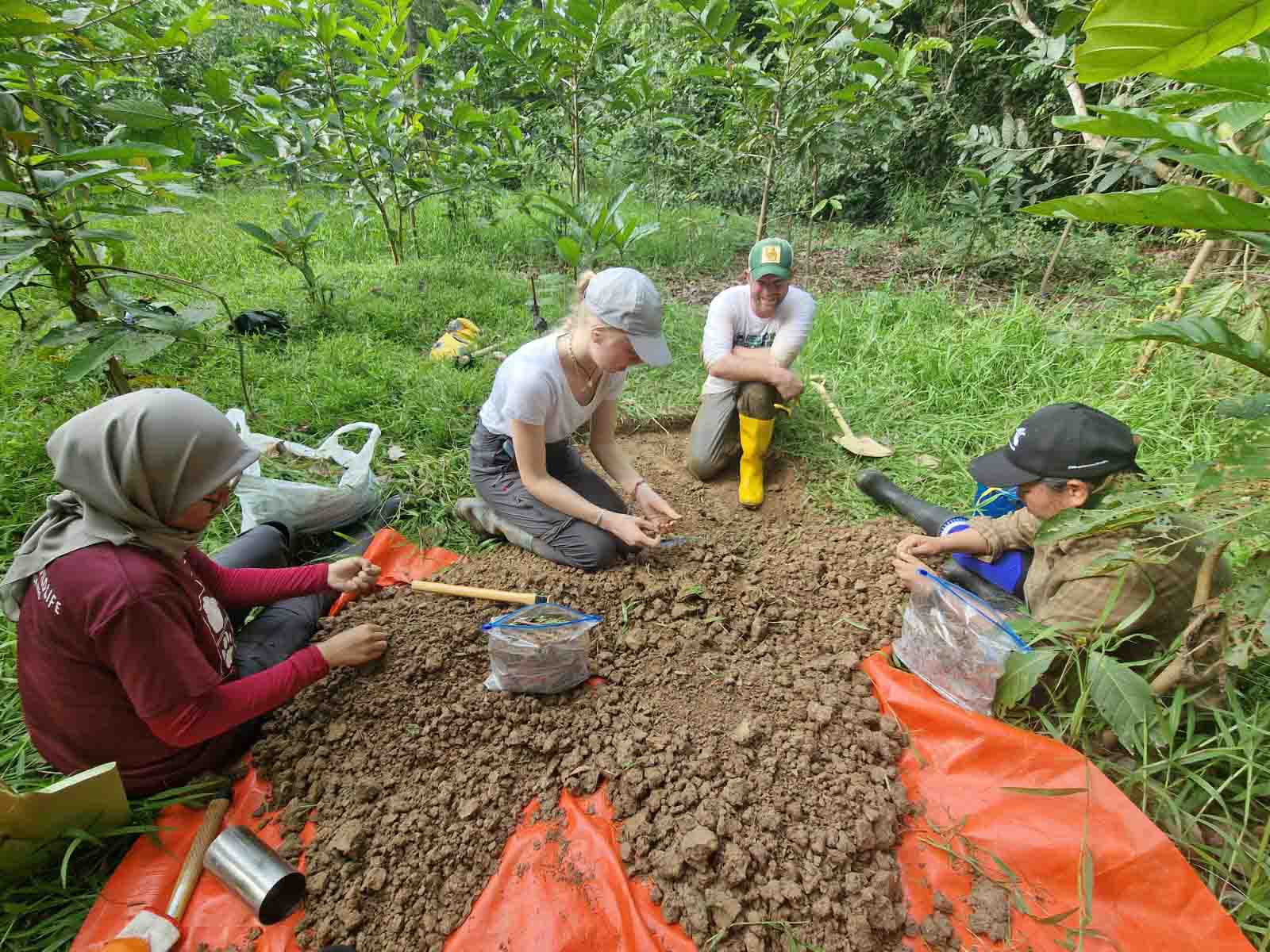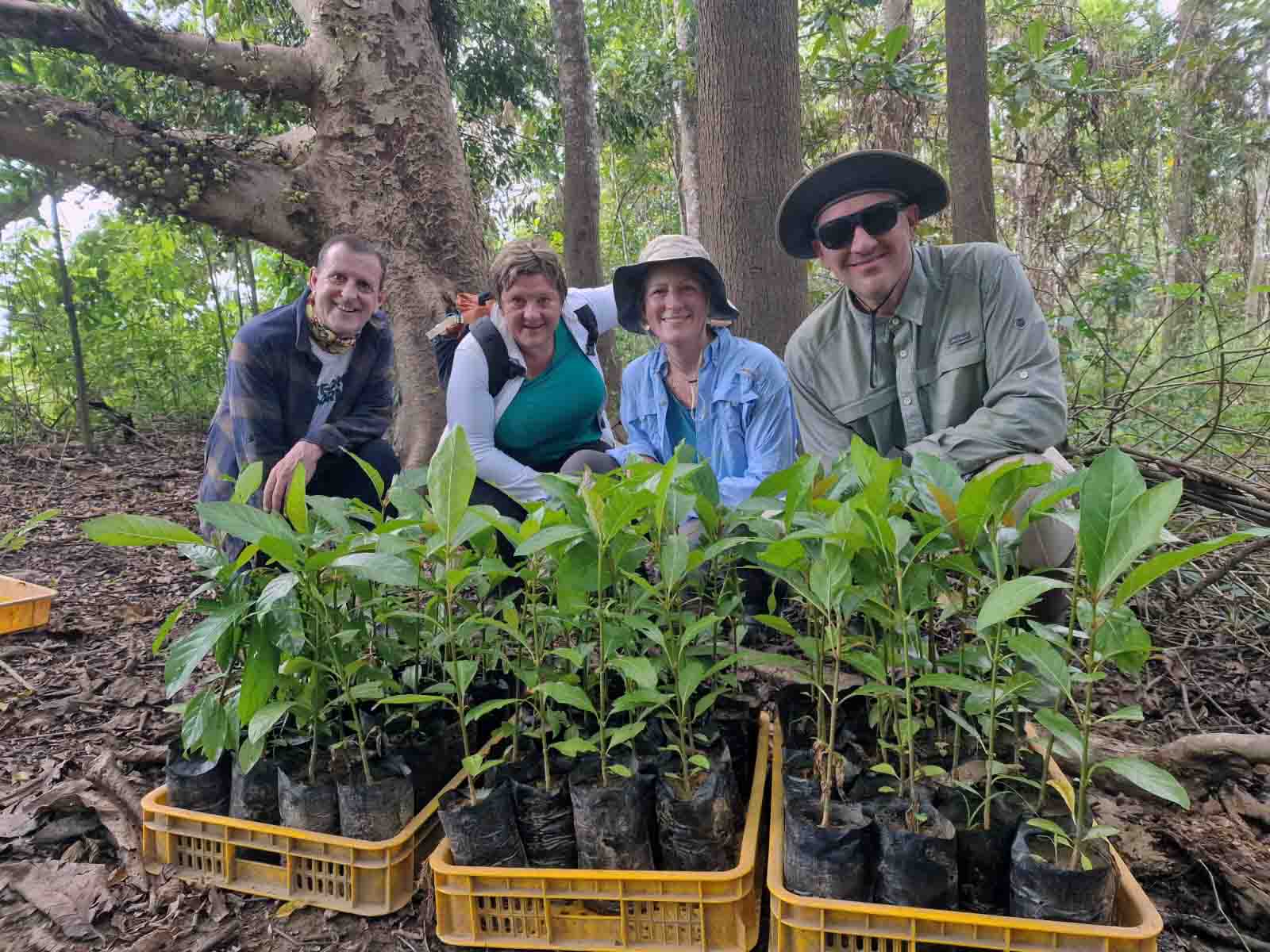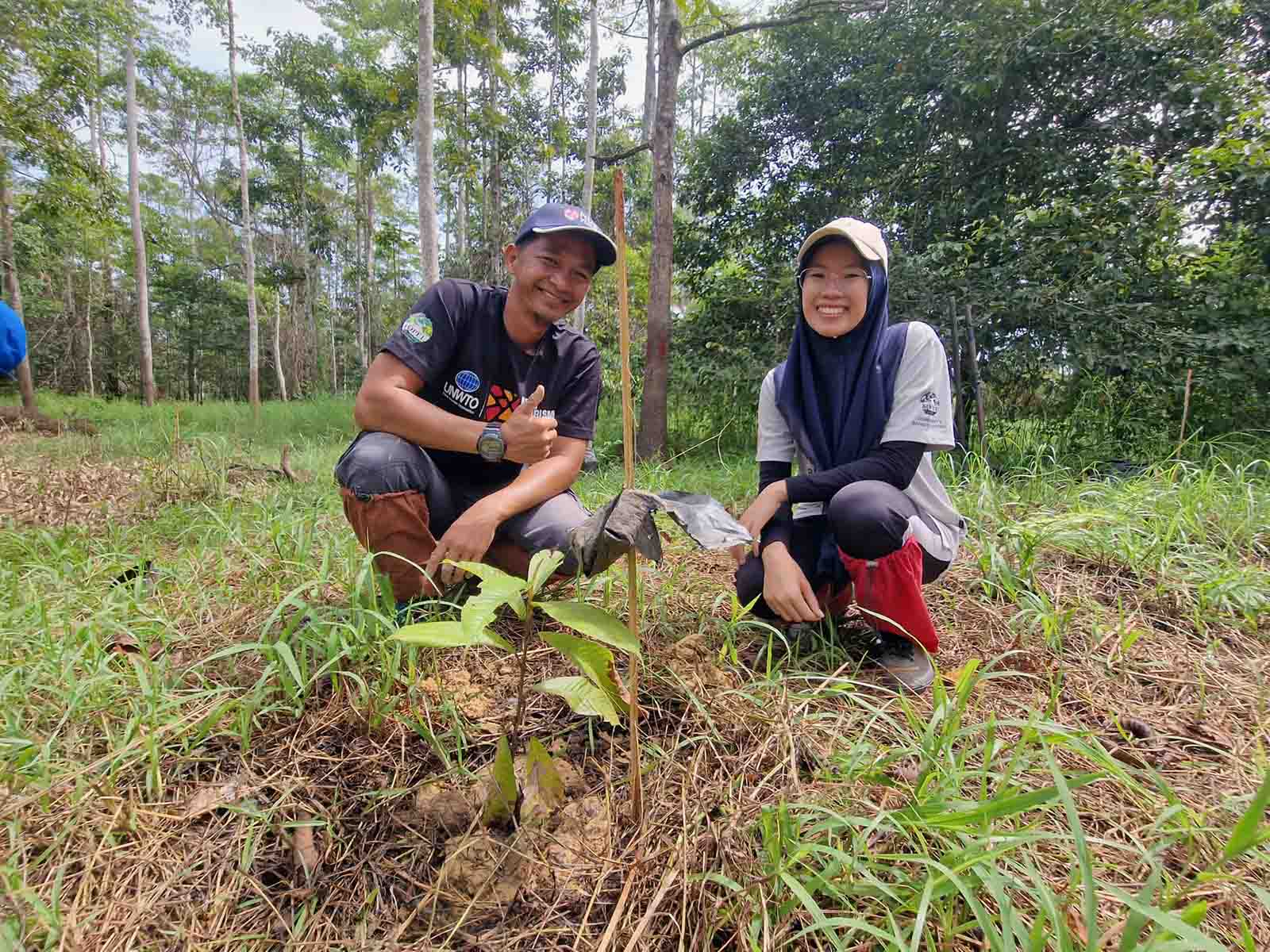New efforts to monitor carbon launched at Regrow Borneo sites, and more!
The second phase of Regrow Borneo’s carbon monitoring study began with the arrival of Dr TC Hales (Cardiff University), a leading scientist in the field of carbon sequestration and co-Chair of the UK-registered registered charity, Regrow Borneo.
Assisted by Maz, one of Danau Girang Field Centre (DGFC)’s Senior Research officers, they began collecting above and below-ground material for analysis from two of the original reforestation plots, Laab Swamp and Kaboi Lake. Both plots are over 30 minutes by boat from DGFC and were cleared and planted, in early 2021, by our project partners and community-based cooperative, KOPEL, based in the local village of Batu Puteh.
Sampling involves the collection and measurement of the below-ground biomass of the roots and the carbon content of the soil by excavating regular-sized pits, while above-ground biomass is measured from collected leaves and deadfall. This work is both hot and heavy going given the tropical heat and near 100% humidity and each site can take a day to complete! Sampling will be carried out each year across all the Regrow Borneo sites with the aim to determine the volume of carbon sequestered per hectare against time.
Along with Prof. Benoit Goossens, Dr TC Hales is also Maz’s PhD supervisor whose project is to evaluate the impact of reforestation within the Regrow Borneo initiative.
The Regrow Borneo Project is not only looking at the benefits of reforestation regarding improved carbon absorption but also the benefits to wildlife.
Biological surveys involve regular visits to the Regrow Borneo sites, during the night and very early morning, to undertake the following surveys:
- Transect walks to identify the presence and species of frogs
- Setting traps for the safe capture, identification, and release of small mammals
- Checking pitfall traps for insects (especially dung beetles, a key indicator to a healthy micro-habitat ecosystem)
- Mist-netting to identify the visiting birds
These surveys are further supported by using acoustic monitoring, a relatively new introduction to wildlife surveillance, which can identify the presence of frogs, birds and other animals thus complementing these more conventional methods.
The Regrow Borneo project offers a more holistic approach rather than simply growing trees to store carbon. It seeks to understand how community-based tropical forest restoration can improve biodiversity, sustain local livelihoods, and improve our scientific understanding of the environmental, economic and social impact.
The project is primarily sponsored through the generous donations we receive via the UK- registered charity ‘Regrow Borneo’. Please consider making a gift by donating here, perhaps to offset your carbon from taking a recent flight, and/or if you would like to learn more about this fascinating study, please watch the Regrow Time series on YouTube.
Adapted, by John Robertson, from the project update that first appeared in Jungle Times Issue #144 (September-October 2022).



